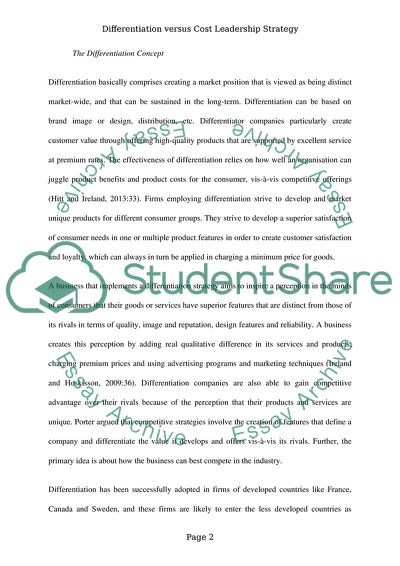Cite this document
(Differentiation versus Cost Leadership Strategy Research Proposal Example | Topics and Well Written Essays - 2000 words, n.d.)
Differentiation versus Cost Leadership Strategy Research Proposal Example | Topics and Well Written Essays - 2000 words. https://studentshare.org/human-resources/1846783-critical-analysis-of-the-differentiation-strategy
Differentiation versus Cost Leadership Strategy Research Proposal Example | Topics and Well Written Essays - 2000 words. https://studentshare.org/human-resources/1846783-critical-analysis-of-the-differentiation-strategy
(Differentiation Versus Cost Leadership Strategy Research Proposal Example | Topics and Well Written Essays - 2000 Words)
Differentiation Versus Cost Leadership Strategy Research Proposal Example | Topics and Well Written Essays - 2000 Words. https://studentshare.org/human-resources/1846783-critical-analysis-of-the-differentiation-strategy.
Differentiation Versus Cost Leadership Strategy Research Proposal Example | Topics and Well Written Essays - 2000 Words. https://studentshare.org/human-resources/1846783-critical-analysis-of-the-differentiation-strategy.
“Differentiation Versus Cost Leadership Strategy Research Proposal Example | Topics and Well Written Essays - 2000 Words”. https://studentshare.org/human-resources/1846783-critical-analysis-of-the-differentiation-strategy.


